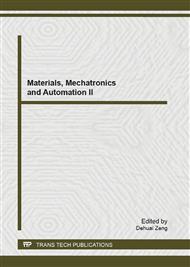p.3
p.9
p.14
p.27
p.39
p.45
p.51
p.56
p.62
H Infinity Control of Descriptor System with Impulse Mode in Novelstate Derivative Space Form
Abstract:
There are three problems that people usually have to face when they carry out optimal control designs in state space system form or descriptor system form. They are no state derivative considered in cost functional,no well-developedstate derivative feedback control algorithms and some systems cannot easily design optimal control in these two system forms. To overcome the problems, a novel state derivative space system (SDS) form is introduced. In this novel form, novel differential Lagrange multiplier should be used to adjoinSDS system constraint to the cost functional that is function of state derivative only to straightforwardly carry out optimal control design. Based on the optimal control design in SDS form, control in SDS form is developed. It showed that for descriptor systems with impulse modes, if they can be expressed in SDS form, one can easily carry outcontrol design by solving only an algebraic Riccati equation. The purpose of this research is to develop novel and simple control algorithms in SDS form so that wider ranges of problems can be solved without much of mathematics overhead.
Info:
Periodical:
Pages:
39-44
Citation:
Online since:
August 2013
Authors:
Price:
Сopyright:
© 2013 Trans Tech Publications Ltd. All Rights Reserved
Share:
Citation:


